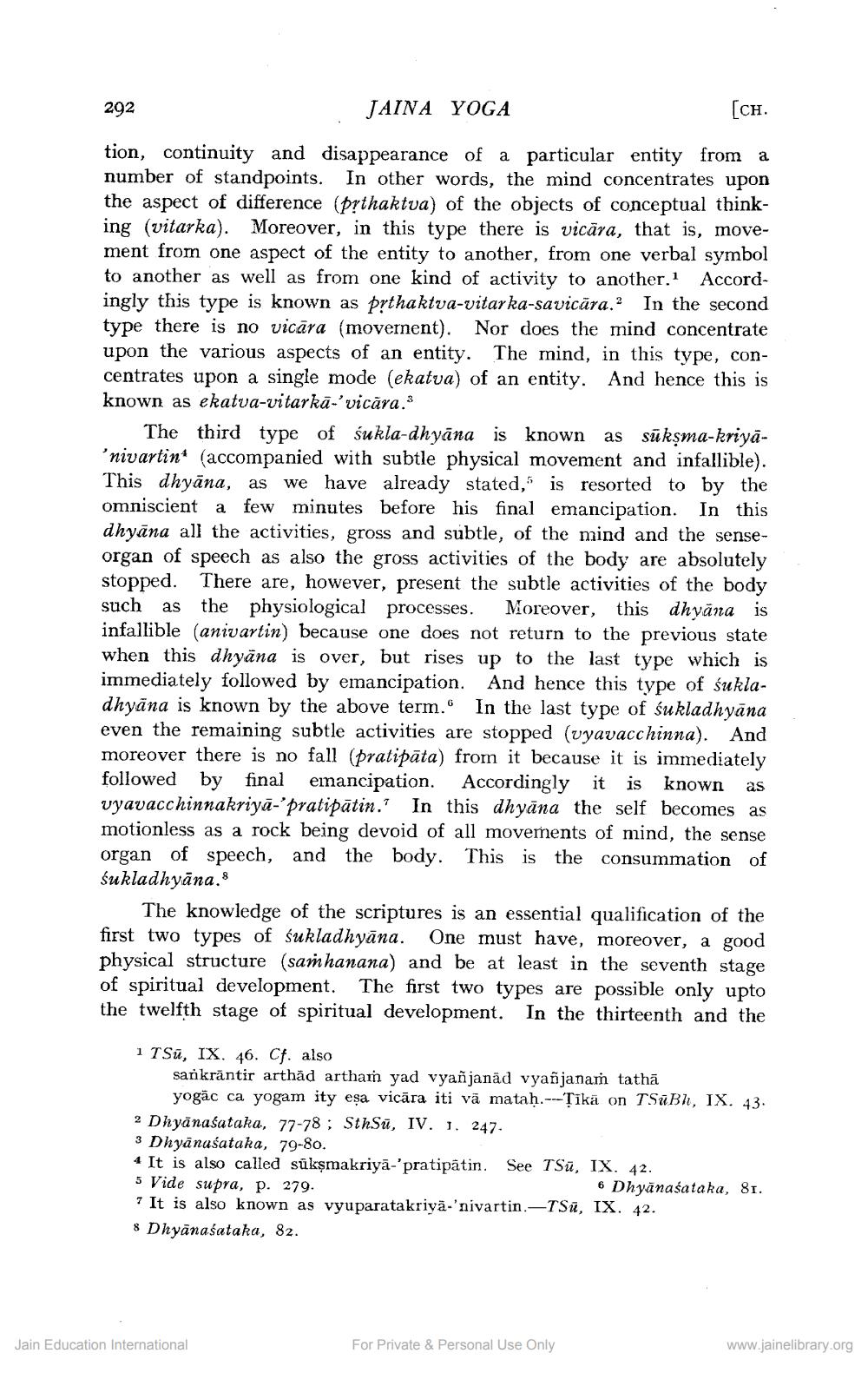________________
292
JAINA YOGA
[ch.
tion, continuity and disappearance of a particular entity from a number of standpoints. In other words, the mind concentrates upon the aspect of difference (prthaktva) of the objects of conceptual thinking (vitarka). Moreover, in this type there is vicāra, that is, movement from one aspect of the entity to another, from one verbal symbol to another as well as from one kind of activity to another. Accordingly this type is known as prthaktva-vitar ka-savicăra.In the second type there is no vicāra (movement). Nor does the mind concentrate upon the various aspects of an entity. The mind, in this type, concentrates upon a single mode (ekatva) of an entity. And hence this is known as ekatua-vitarka-' vicara.
The third type of śukla-dhyāna is known as sūkşma-kriya'nivartin* (accompanied with subtle physical movement and infallible). This dhyāna, as we have already stated, is resorted to by the omniscient a few minutes before his final emancipation. In this dhyāna all the activities, gross and subtle, of the mind and the senseorgan of speech as also the gross activities of the body are absolutely stopped. There are, however, present the subtle activities of the body such as the physiological processes. Moreover, this dhyāna is infallible (anivartin) because one does not return to the previous state when this dhyāna is over, but rises up to the last type which is immediately followed by emancipation. And hence this type of śukladhyāna is known by the above term. In the last type of sukladhyāna even the remaining subtle activities are stopped (vyavacchinna). And moreover there is no fall (pratipāta) from it because it is immediately followed by final emancipation. Accordingly it is known as vyavacchinnakriya-'pratipātin.? In this dhyāna the self becomes as motionless as a rock being devoid of all movements of mind, the sense organ of speech, and the body. This is the consummation of śukladhyāna.
The knowledge of the scriptures is an essential qualification of the first two types of śukladhyāna. One must have, moreover, a good physical structure (samhanana) and be at least in the seventh stage of spiritual development. The first two types are possible only upto the twelfth stage of spiritual development. In the thirteenth and the
1 TSū, IX. 46. Cf. also
sankrāntir arthăd artham yad vyañjanäd vyañjanaṁ tathā
yogāc ca yogam ity eșa vicāra iti vā mataḥ.---Tīkä on TSūBh, IX. 43. 2 Dhyānaśataka, 77-78; SthSü, IV. J. 247. 3 Dhyanaśataka, 79-80. 4 It is also called sükşmakriyā- pratipatin. See TSü, IX. 42. 5 Vide supra, p. 279.
6 Dhyānaśataka, 81. ? It is also known as vyuparata kriya-'nivartin.-TSū, IX. 42. 8 Dhyanaśataka, 82.
Jain Education International
For Private & Personal Use Only
www.jainelibrary.org




